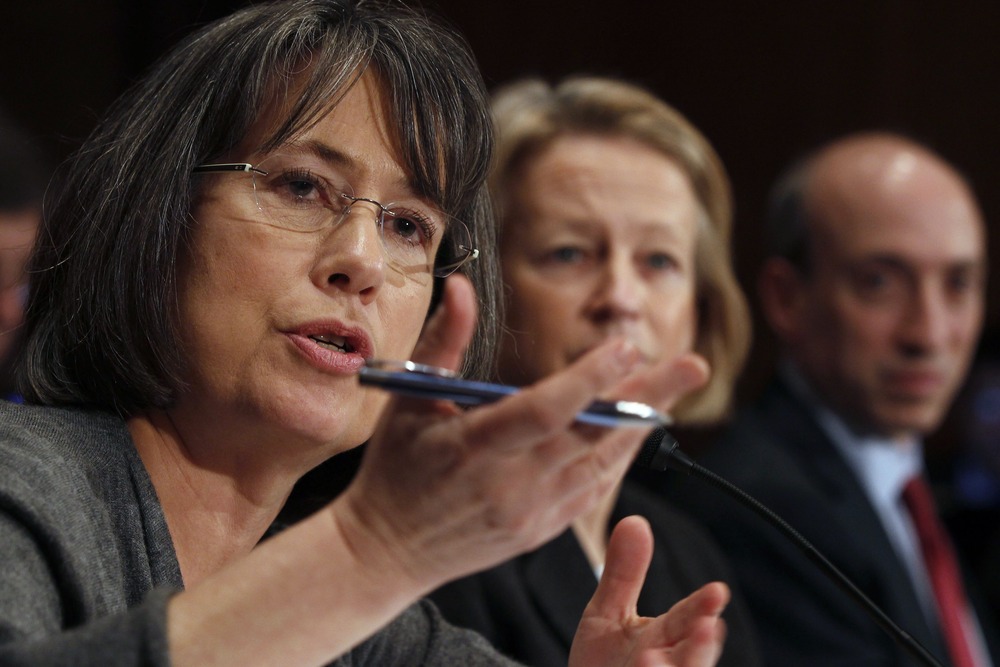
“With Cyprus...the game itself changed. By raiding the depositors’ accounts, a major central bank has gone where they would not previously have dared. The Rubicon has been crossed.” —Eric Sprott, Shree Kargutkar, “Caveat Depositor”
The crossing of the Rubicon into the confiscation of depositor funds was not a one-off emergency measure limited to Cyprus. Similar “bail-in” policies are now appearing in multiple countries. What triggered the new rules may have been a series of game-changing events including the refusal of Iceland to bail out its banks and their depositors; Bank of America’s commingling of its ominously risky derivatives arm with its depository arm over the objections of the FDIC; and the fact that most EU banks are now insolvent. A crisis in a major nation such as Spain or Italy could lead to a chain of defaults beyond anyone’s control, and beyond the ability of federal deposit insurance schemes to reimburse depositors.
The new rules for keeping the too-big-to-fail banks alive: use creditor funds, including uninsured deposits, to recapitalize failing banks.
But isn’t that theft?
Perhaps, but it’s legal theft. By law, when you put your money into a deposit account, your money becomes the property of the bank. You become an unsecured creditor with a claim against the bank. Before the Federal Deposit Insurance Corporation (FDIC) was instituted in 1934, U.S. depositors routinely lost their money when banks went bankrupt. Your deposits are protected only up to the $250,000 insurance limit, and only to the extent that the FDIC has the money to cover deposit claims or can come up with it.
The question then is, how secure is the FDIC?
Can the FDIC Go Bankrupt?
In 2009, when the FDIC fund went $8.2 billion in the hole, Chairwoman Sheila Bair assured depositors that their money was protected by a hefty credit line with the Treasury. But the FDIC is funded with premiums from its member banks, which had to replenish the fund. The special assessment required to do it was crippling for the smaller banks, and that was just to recover $8.2 billion. What happens when Bank of America or JPMorganChase, which have commingled their massive derivatives casinos with their depositary arms, is propelled into bankruptcy by a major derivatives fiasco? These two banks both have deposits exceeding $1 trillion, and they both have derivatives books with notional values exceeding the GDP of the world.
Bank of America Corporation moved its trillions in derivatives (mostly credit default swaps) from its Merrill Lynch unit to its banking subsidiary in 2011. It did not get regulatory approval but just acted at the request of frightened counterparties, following a downgrade by Moody’s. The FDIC opposed the move, reportedly protesting that the FDIC would be subjected to the risk of becoming insolvent if BofA were to file for bankruptcy. But the Federal Reserve favored the move, in order to give relief to the bank holding company. (Proof positive,says former regulator Bill Black, that the Fed is working for the banks and not for us. “Any competent regulator would have said: ‘No, Hell NO!’”)
The reason this risky move would subject the FDIC to insolvency, as explained in my earlier article here, is that under the Bankruptcy Reform Act of 2005, derivatives counter-parties are given preference over all other creditors and customers of the bankrupt financial institution, including FDIC insured depositors. Normally, the FDIC would have the powers as trustee in receivership to protect the failed bank’s collateral for payments made to depositors. But the FDIC’s powers are overridden by the special status of derivatives. (Remember MF Global? The reason its customers lost their segregated customer funds to the derivatives claimants was that derivatives have super-priority in bankruptcy.)
The FDIC has only about $25 billion in its deposit insurance fund, which is mandated by law to keep a balance equivalent to only 1.15 percent of insured deposits. And the Dodd-Frank Act (Section 716) now bans taxpayer bailouts of most speculative derivatives activities. Drawing on the FDIC’s credit line with the Treasury to cover a BofA or JPMorgan derivatives bust would be the equivalent of a taxpayer bailout, at least if the money were not paid back; and imposing that burden on the FDIC’s member banks is something they can ill afford.
BofA is not the only bank threatening to wipe out the federal deposit insurance funds that most countries have. According to Willem Buiter, chief economist at Citigroup, most EU banks are zombies. And that explains the impetus for the new “bail in” policies, which put the burden instead on the unsecured creditors, including the depositors. Below is some additional corroborating research on these new, game-changing bail-in schemes.
Depositors Beware
An interesting series of commentaries starts with one on the website of Sprott Asset Management Inc. titled “Caveat Depositor,” in which Eric Sprott and Shree Kargutkar note that the US, UK, EU, and Canada have all built the new “bail in” template to avoid imposing risk on their governments and taxpayers. They write:
"[M]ost depositors naively assume that their deposits are 100% safe in their banks and trust them to safeguard their savings. Under the new “template” all lenders (including depositors) to the bank can be forced to “bail in” their respective banks."
Dave of Denver then followed up on the Sprott commentary in an April 3 entry on his blog The Golden Truth, in which he pointed out that the new template has long been agreed to by the G20 countries:
"Because the use of taxpayer-funded bailouts would likely no longer be tolerated by the public, a new bank rescue plan was needed. As it turns out, this new 'bail-in' model is based on an agreement that was the result of a bank bail-out model that was drafted by a sub-committee of the BIS (Bank for International Settlement) and endorsed at a G20 summit in 2011. For those of you who don’t know, the BIS is the global 'Central Bank' of Central Banks. As such it is the world’s most powerful financial institution."
The links are in Dave’s April 1 article, which states:
The new approach has been agreed at the highest levels...It has been a topic under consideration since the publication by the Financial Stability Board (a BIS committee) of a paper, [Key Attributes of Effective Resolution Regimes for Financial Institutions](http://www.financialstabilityboard.org/publications/r_111104cc.pdf) in October 2011, which was endorsed at the Cannes G20 summit the following month. This was followed by a consultative document in November 2012, [Recovery and Resolution Planning: Making the Key Attributes Requirements Operational](http://www.financialstabilityboard.org/publications/r_121102.pdf).
Dave goes on:
[W]hat is commonly referred to as a “bail-in” in Cyprus is actually a global bank rescue model that was derived and ratified nearly two years ago....[B]ank deposits in excess of Government insured amount in any bank in any country will be treated like unsecured debt if the bank goes belly-up and is restructured in some form.
Jesse at Jesse’s Café Americain then picked up the thread and pointed out that it is not just direct deposits that are at risk. The too-big-to-fail banks have commingled accounts in a web of debt that spreads globally. Stock brokerages keep their money market funds in overnight sweeps in TBTF banks, and many credit unions do their banking at large TBTF correspondent banks:
"You say you have money in a pension fund and an IRA at XYZ bank? Oops, it is really on deposit in you-know-who’s bank. You say you have money in a brokerage account? Oops, it is really being held overnight in their TBTF bank. Remember MF Global? Who can say how far the entanglements go? The current financial system and market structure is crazy with hidden risk, insider dealings, control frauds, and subtle dangers."
Also at Risk: Pension Funds and Public Revenues
William Buiter, writing in the U.K. Financial Times in March 2009, defended the bail-in approach as better than the alternative. But he acknowledged that the “unsecured creditors” who would take the hit were chiefly “pensioners drawing their pensions from pension funds heavily invested in unsecured bank debt and owners of insurance policies with insurance companies holding unsecured bank debt,” and that these unsecured creditors “would suffer a large decline in financial wealth and disposable income that would cause them to cut back sharply on consumption.”
The deposits of U.S. pension funds are well over the insured limit of $250,000. They will get raided just as the pension funds did in Cyprus, and so will the insurance companies. Who else?
Most state and local governments also keep far more on deposit than $250,000, and they keep these revenues largely in TBTF banks. Community banks are not large enough to service the complicated banking needs of governments, and they are unwilling or unable to come up with the collateral that is required to secure public funds over the $250,000 FDIC limit.
The question is, how secure are the public funds in the TBTF banks? Like the depositors who think FDIC insurance protects them, public officials assume their funds are protected by the collateral posted by their depository banks. But the collateral is liable to be long gone in a major derivatives bust, since derivatives claimants have super-priority in bankruptcy over every other claim, secured or unsecured, including those of state and local governments.
The Cyprus Wakeup Call
Robert Teitelbaum wrote in a May 2011 article, “The Case Against Favored Treatment of Derivatives”:
...Dodd-Frank did not touch favored status [of derivatives] and despite all the sound and fury,...there are very few signs from either party that anyone with any clout is suddenly about to revisit that decision and simplify bankruptcy treatment. Why? Because for all its relative straightforwardness compared to more difficult fixes, derivatives remains a mysterious black box to most Americans...[A]s the sense of urgency to reform passes...we return to a situation of technical interest to only a few, most of whom have their own particular self-interest in mind.
But that was in 2011, before the Cyprus alarm bells went off. It is time to pry open the black box, get educated, and get organized. Here are three things that need to be done for starters:
• Protect depositor funds from derivative raids by repealing the super-priority status of derivatives.
• Separate depository banking from investment banking by repealing the Commodity Futures Modernization Act of 2000 and reinstating the Glass-Steagall Act.
• Protect both public and private revenues by establishing a network of publicly-owned banks, on the model of the Bank of North Dakota.
Originally published by Web of Debt.
3 WAYS TO SHOW YOUR SUPPORT
- Log in to post comments













